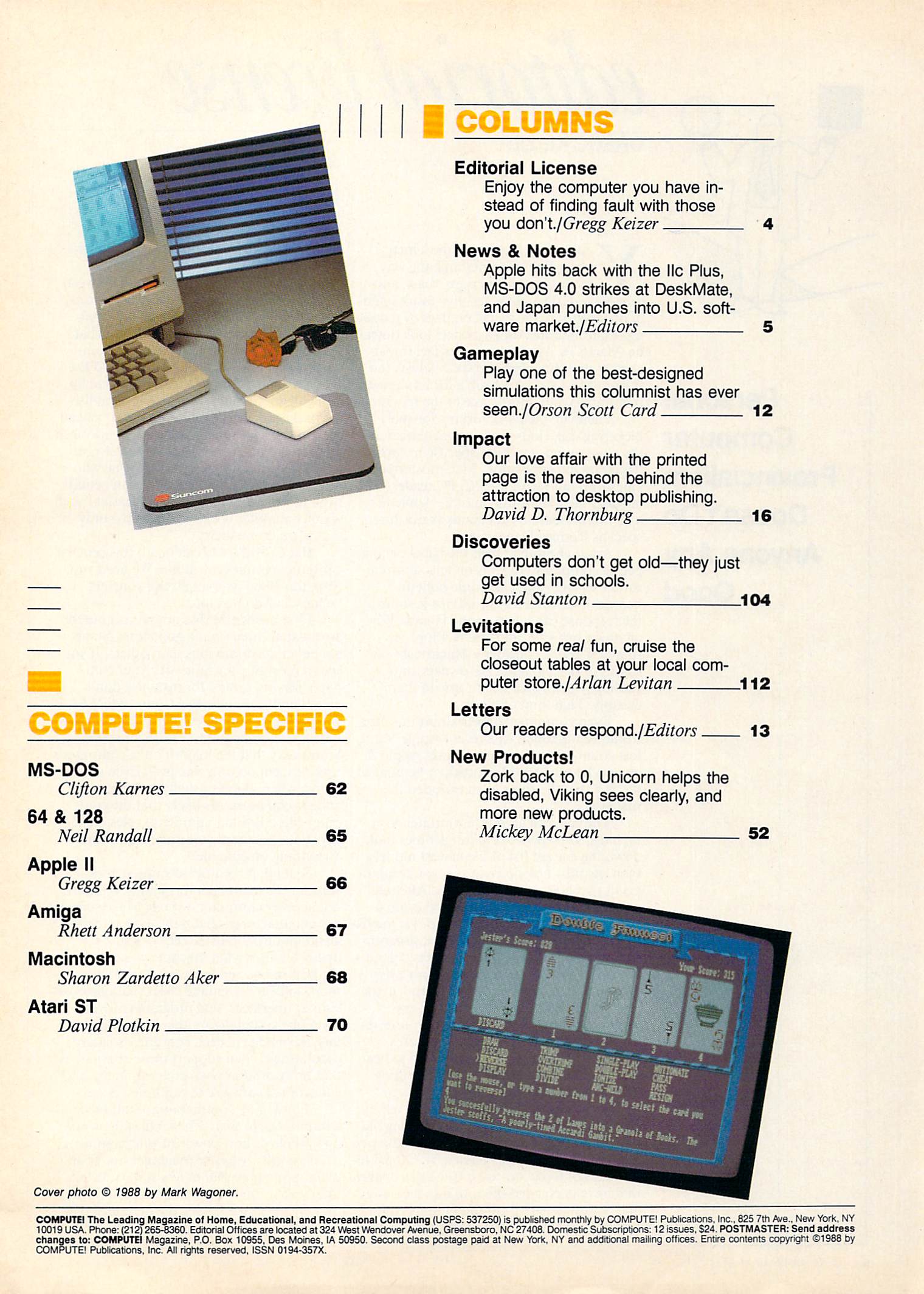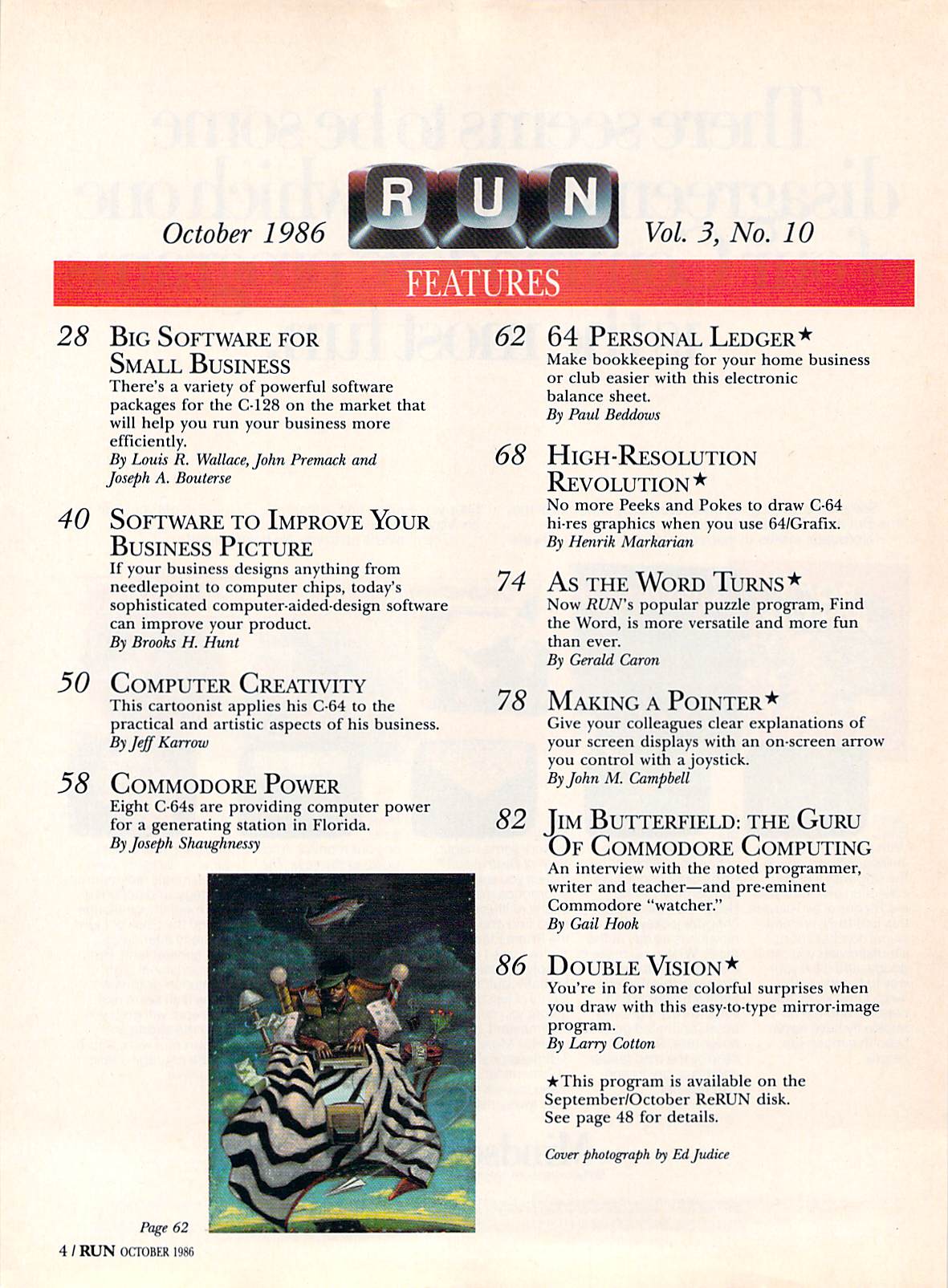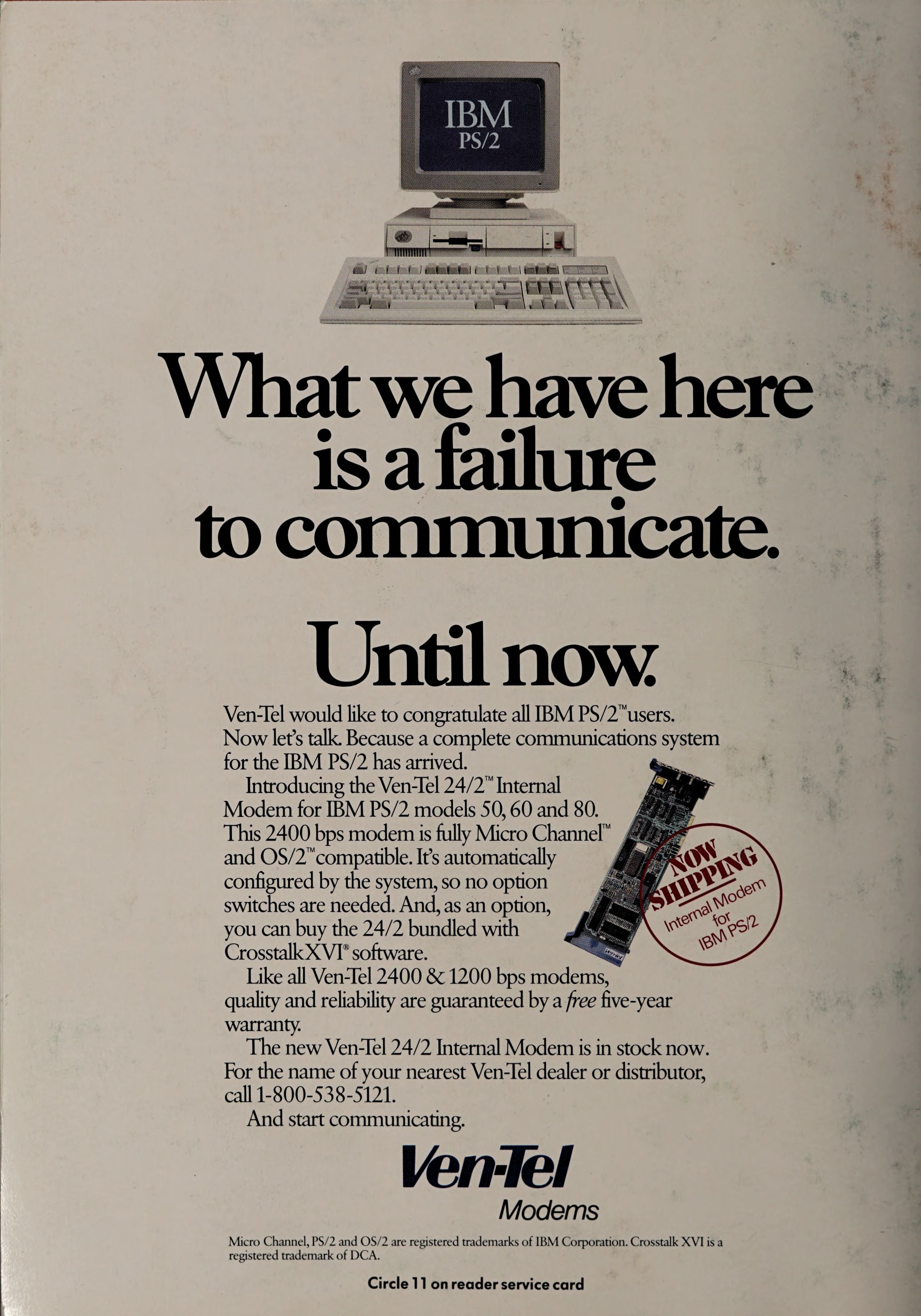Cover Stories
- Computing - Predictions for the future of personal computing including a computer on every desk by the early 1990s, as many computers as TVs in the home by the end of the century, and lots more.
- Other Voices, Other Futures - The opinions of various people on the future of computing. Those surveyed include Ray Bradbury, a theologian, Bob Hope's personal comedy writer, and many others.
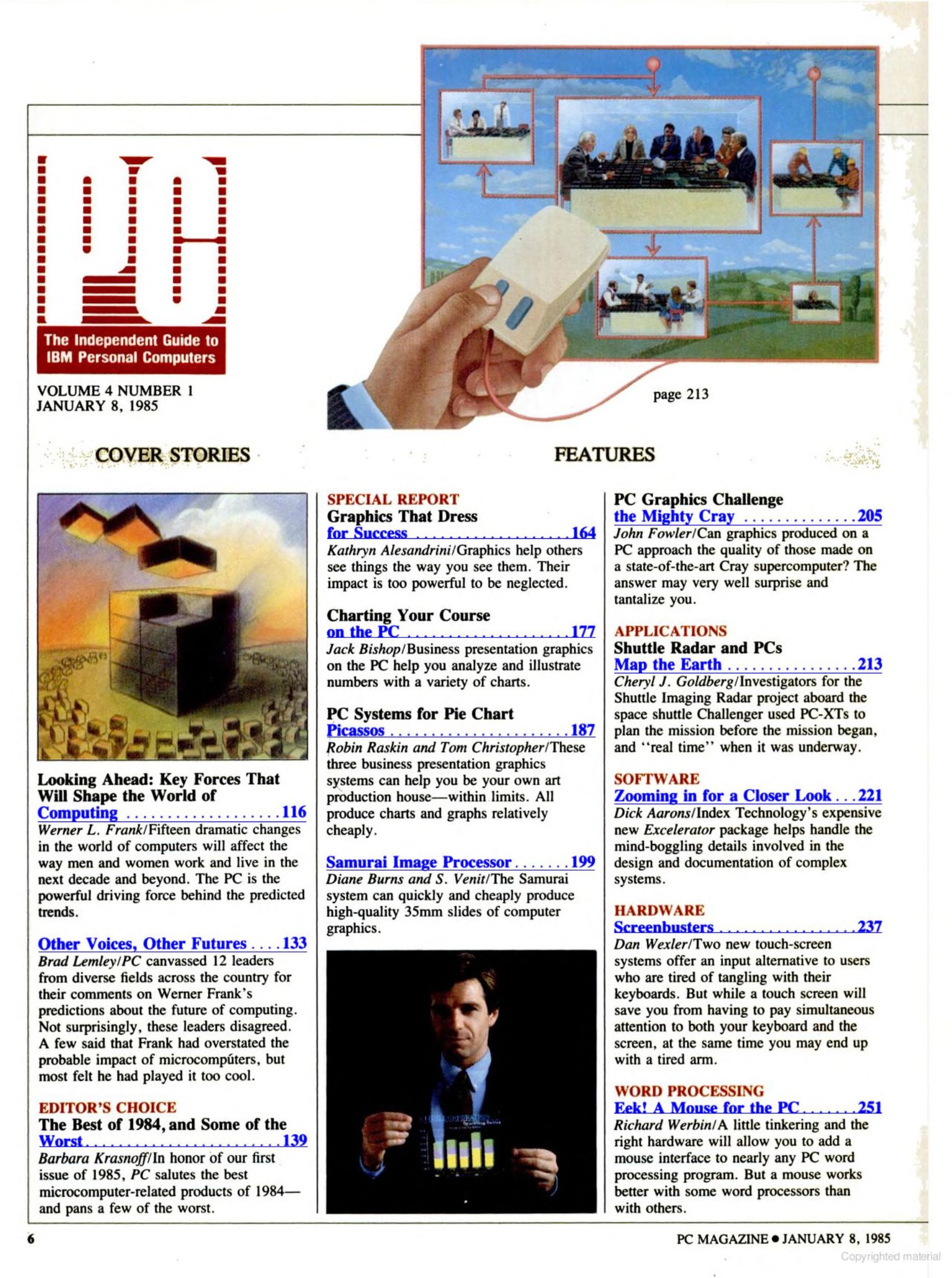
Table of Contents from the January 8th, 1985 issue of PC Magazine
Features
- Graphics That Dress for Success - A look at various busines graphics software, mostly for data visualization. Products looked at include VCN ExecuVison, HyperGraphics, and ExecGraphics.
- Charting Your Course on the PC - A look at software specifically for creating charts and graphs including Lotus 1-2-3, SuperCalc, Chart-Master, DR Graph, GrafTalk, and Graphwriter.
- PC Systems for Pie Chart Picassos - A look at three buisness presentation graphics software packages, including PictureIt/VideoShow, Presentation Master, and Genigraphics.
- Samurai Image Processor - A system that uses software, a graphics card, and a film recorder to produce slies of computer graphics. This was before projectors and PowerPoint.
- PC Graphics Challenge the Mighty Cray - Comparing the graphics capabilities of the PC with those of the Cray super computer.
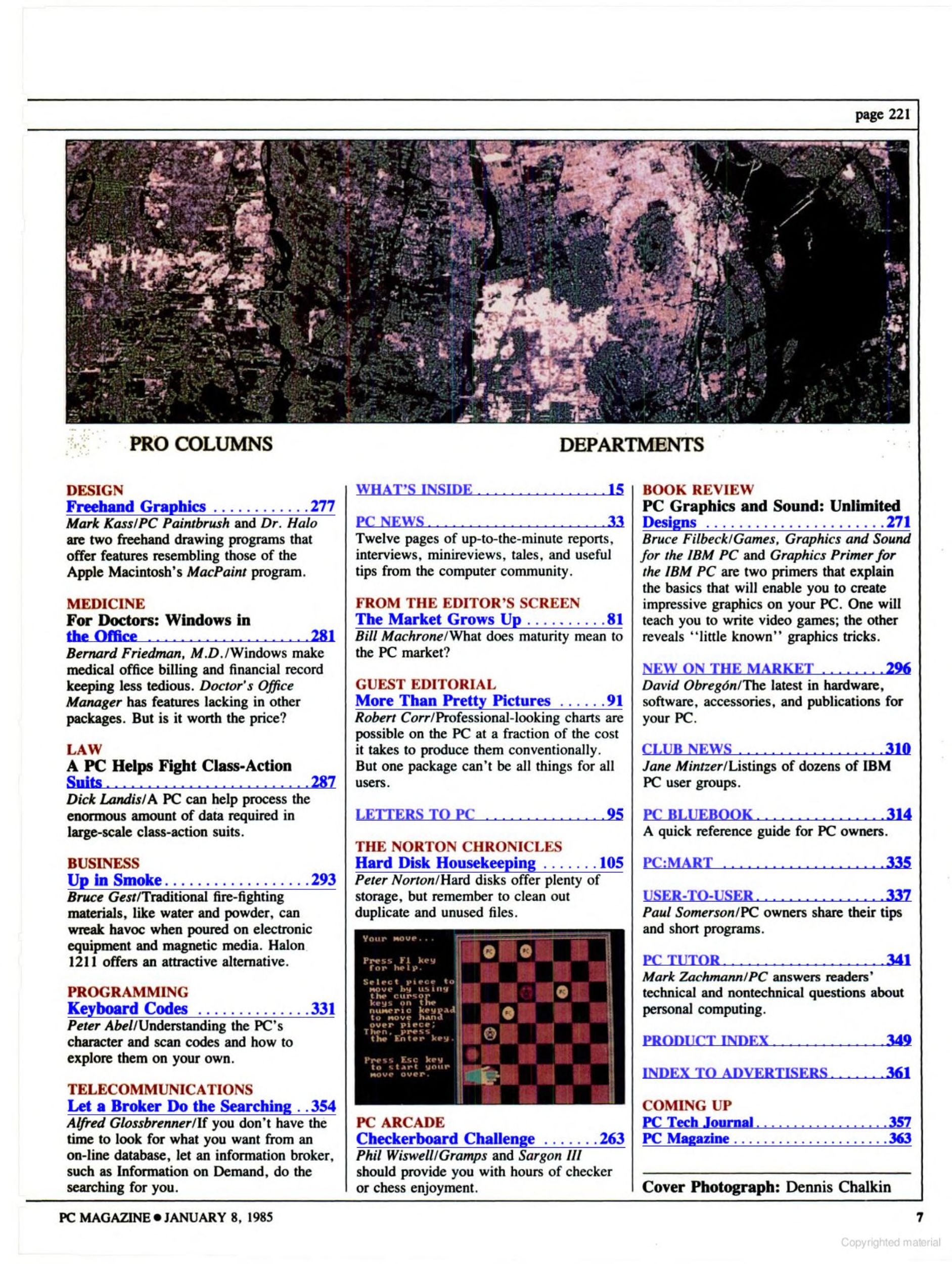
Table of Contents from the January 8th, 1985 issue of PC Magazine (continued)
Pro Columns
- Freehand Graphics - Two art programs for the PC, PC Paintbrush and Dr. Halo, are evaluated and compared to MacPaint.
- For Doctors: Windows in the Office - A look at Doctor's Office Manager, medical software from IBM.
- A PC Helps Fight Class-Action Suits - How PCs, along with an Epson FX-100 printer, Hayes 1200B internal modem, R:base Series 4000 database software, PMate text editing software, Multiplan spreadsheet software, WordStar word processor and FYI 3000 text management software, helped to win class-action lawsuits against Burlington Northern, Western Electric, Motorola, and the Chicago City Council.
- Up in Smoke - Using Halon 1211 instead of water and other traditional to fight fire in order to protect electronic equipment and magnetic media.
Departments
- PC News - Data loss becomes an increasing problem as those new to mass storage systems don't backup their data. Tape backups were the best choice at the time. Infocom releases a database package called Cornerstone. Compaq updates Deskpro line of computers with 10-30 MB hard drives...and more.
- The Market Grows Up - How both PCs and users have matured over recent years.
- More Than Pretty Pictures - The limitations of current PC business graphics packages.
- Letters to PC - Letters from readers about software being sold before it is ready, The Technical Investor, Garland Pathfinder, and mail-order price wars.
- Hard Disk Housekeeping - A look at various programs to help organize and keep your hard drive clean.
- Checkerboard Challenge - Reviews of Gramps: The Checker Champion and Sargon III.

Back cover of the January 8th, 1985 issue of PC Magazine
Read more: https://www.megalextoria.com/wordpress/index.php/2024/01/25/pc-magazine-january-8th-1985/








